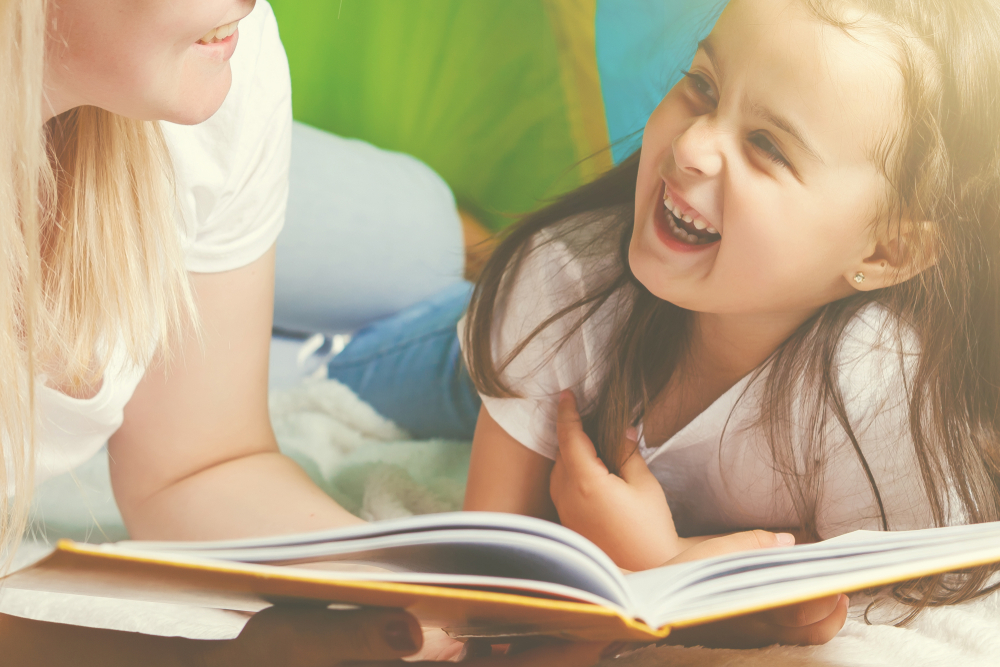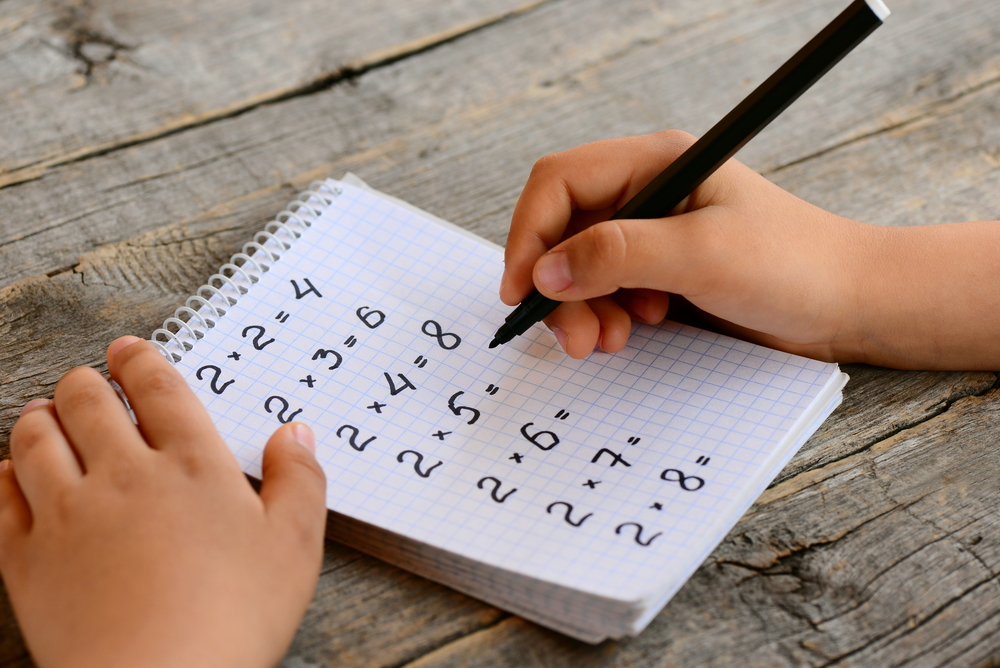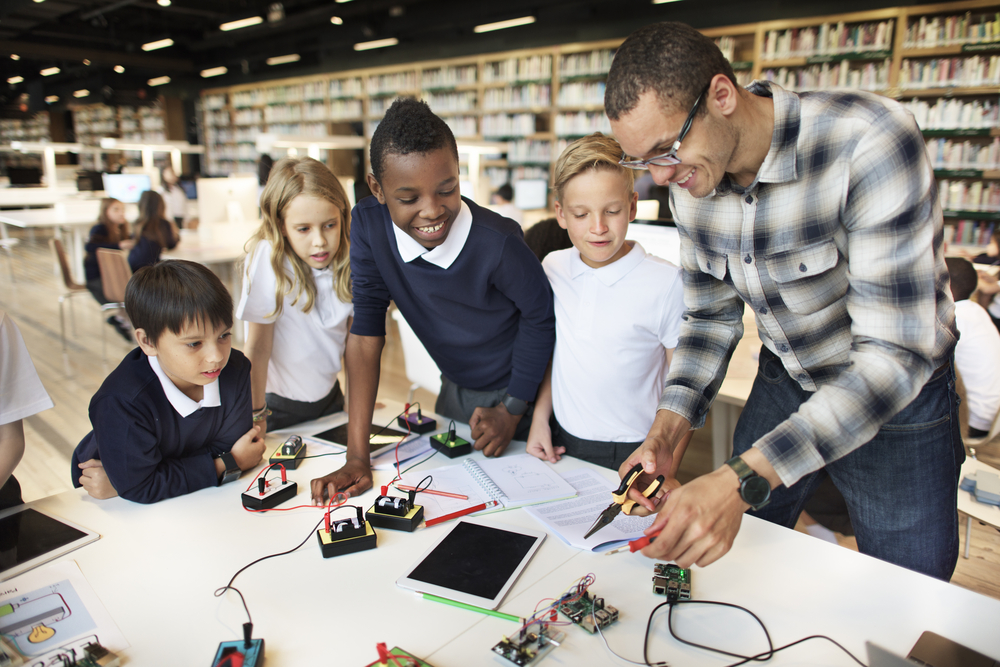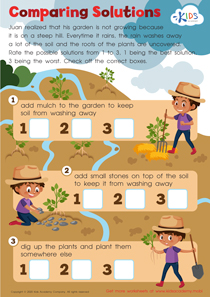Songs and Poems worksheets activities for Ages 5-8
22 filtered results
-
From - To
Explore our delightful collection of Songs and Poems worksheets designed specifically for children ages 5-8! These engaging activities foster a love for language through the magic of music and poetry. Kids can explore rhythm, rhyme, and storytelling while enhancing their listening and comprehension skills. Our printable worksheets include fun exercises that promote creativity and imagination, inspiring young learners to write their own verses. Whether it’s singing along to familiar tunes or diving into whimsical poetry, these activities encourage self-expression and boost literacy development in a joyful manner. Perfect for classroom use or home learning, these worksheets make education entertaining!
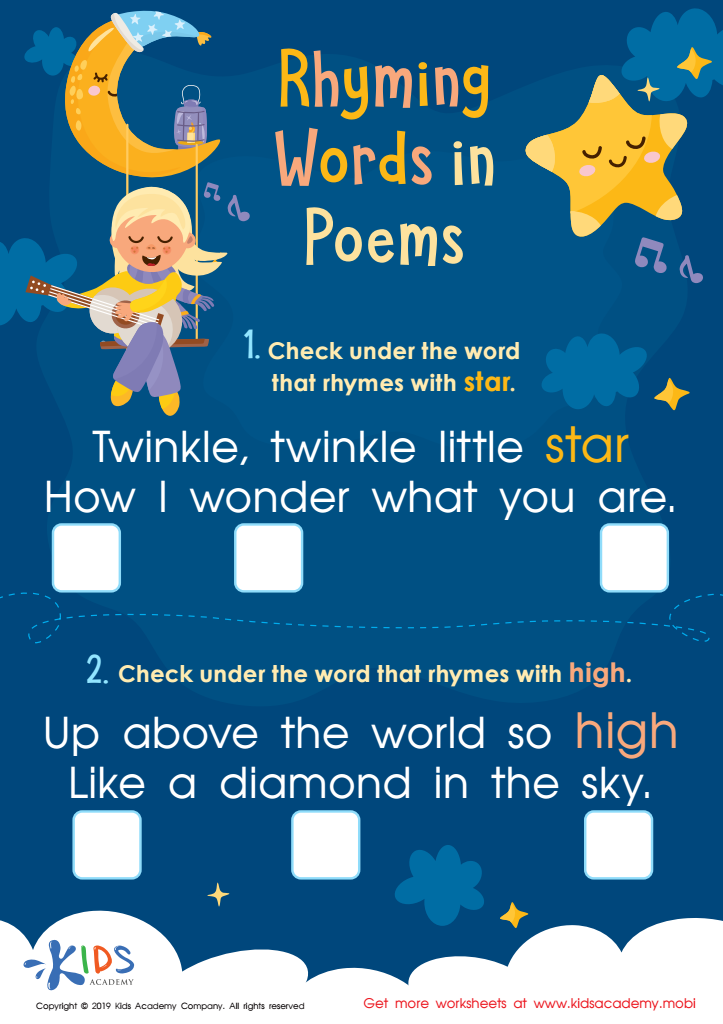

Rhyming Words in Poems Worksheet
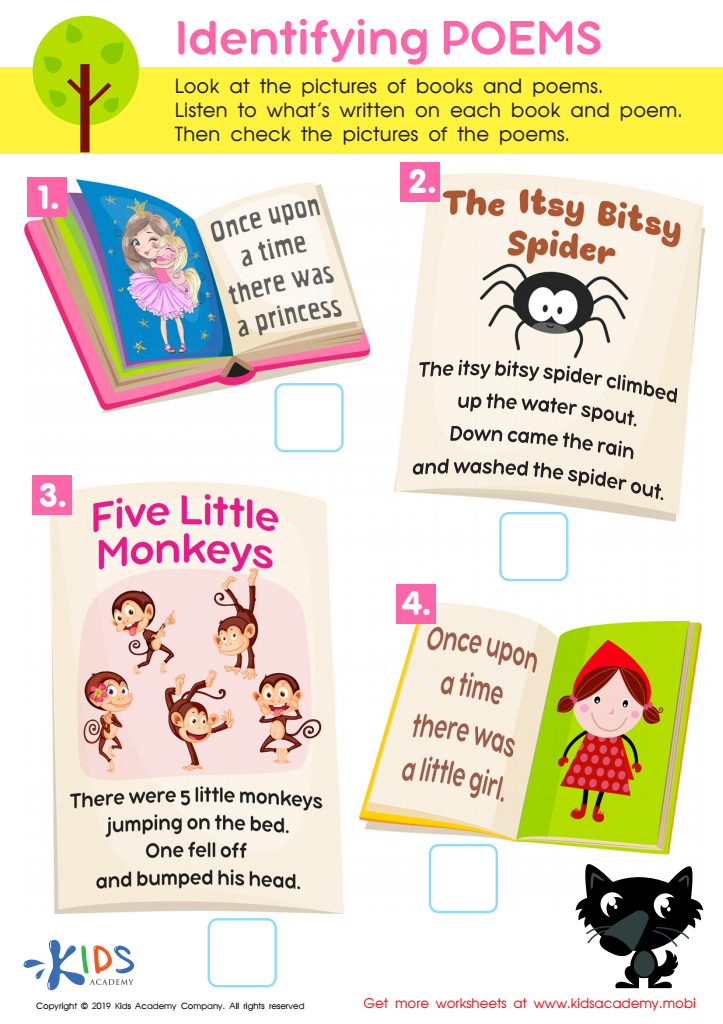

Identifying Poems Worksheet
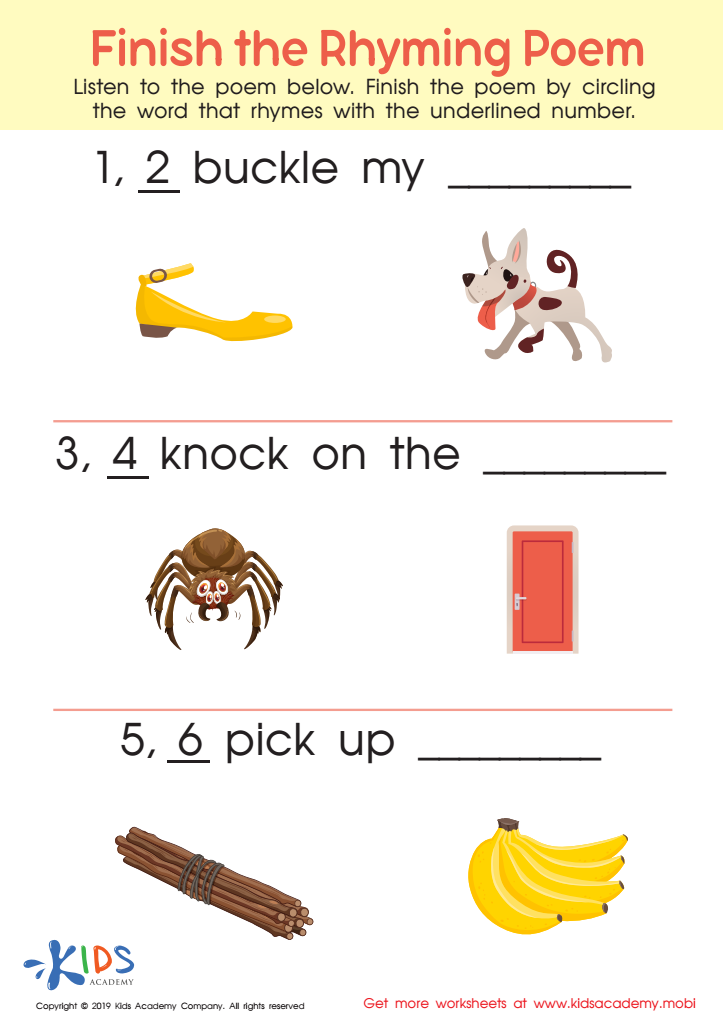

Finish Rhyming Poem Worksheet
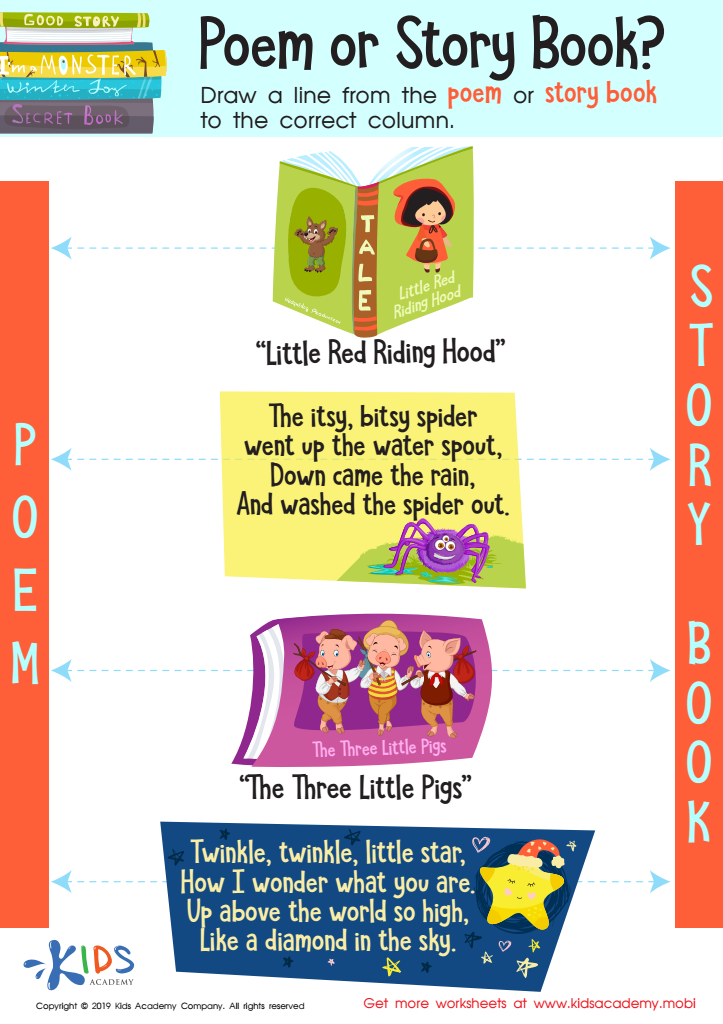

Poem or Story Book? Worksheet
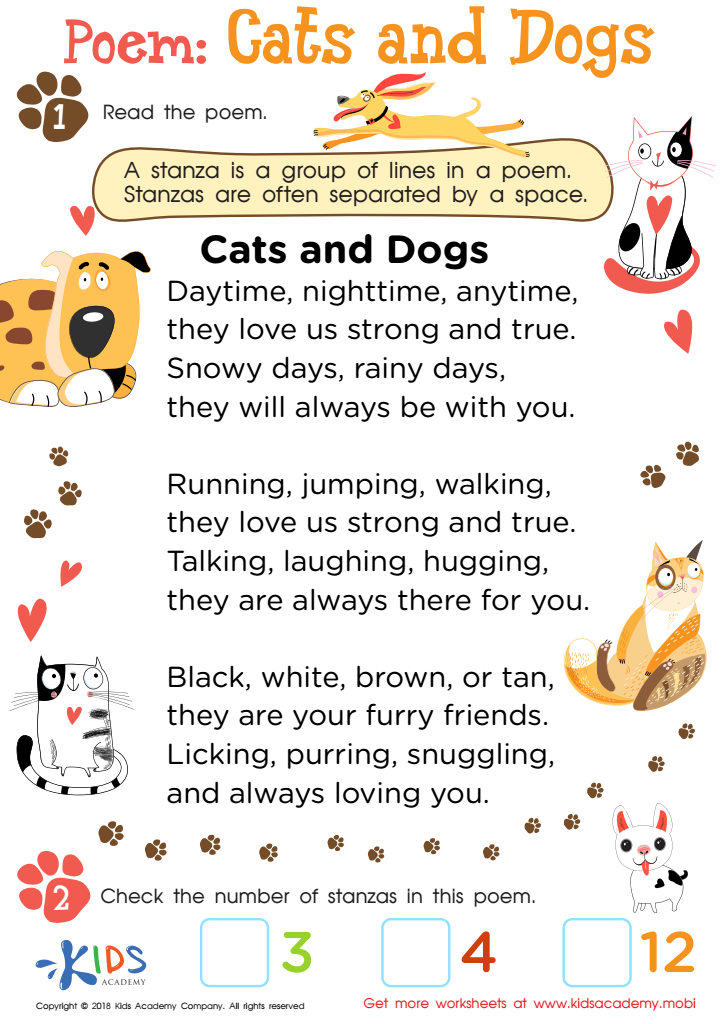

Poem: Cats and Dogs Worksheet
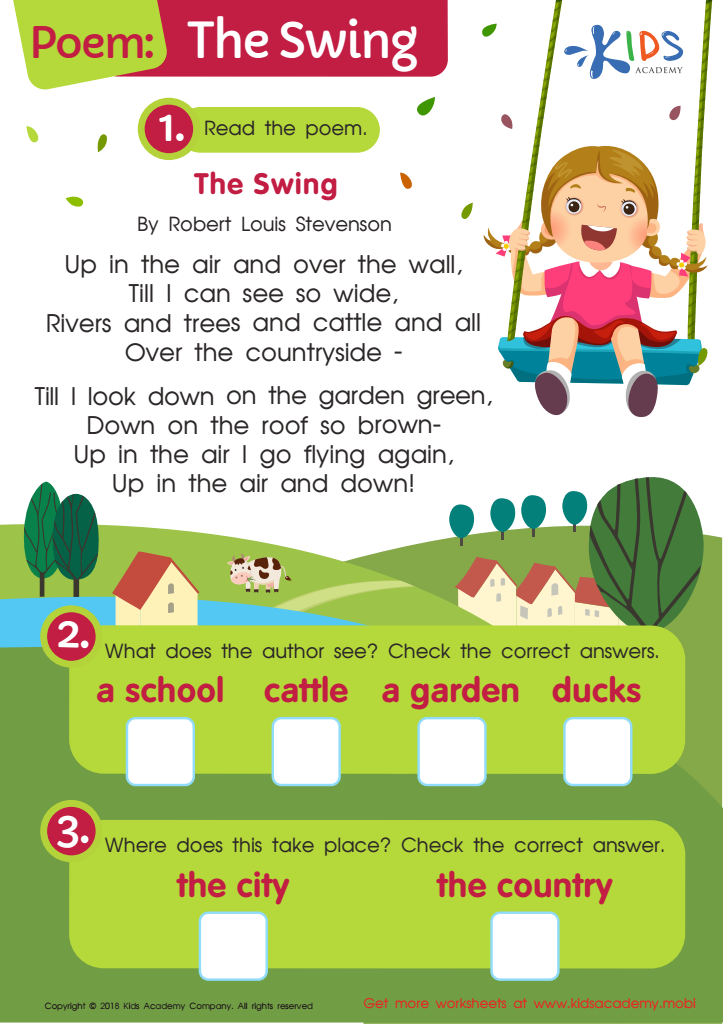

Poem: The Swing Worksheet
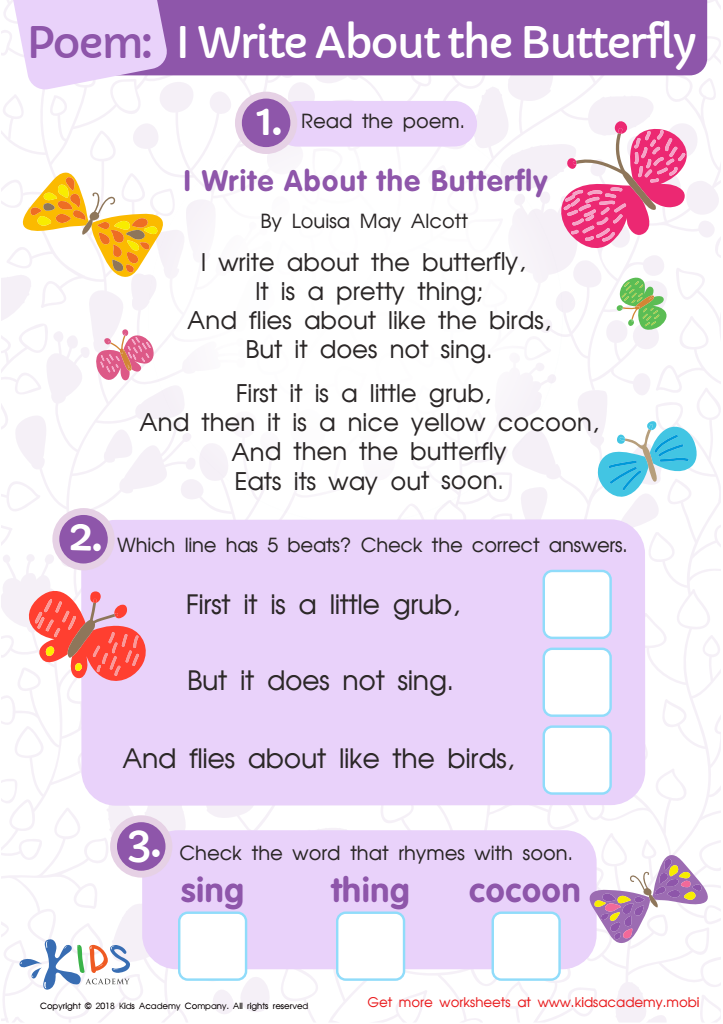

Poem: I Write About The Butterfly Worksheet
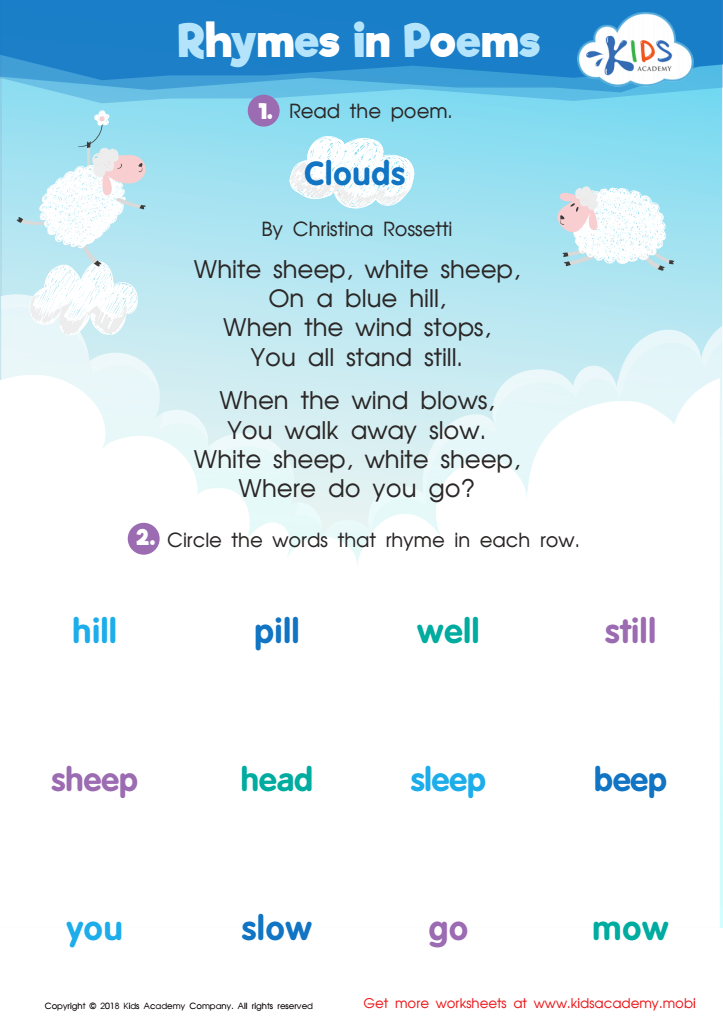

Rhymes in Poems Worksheet
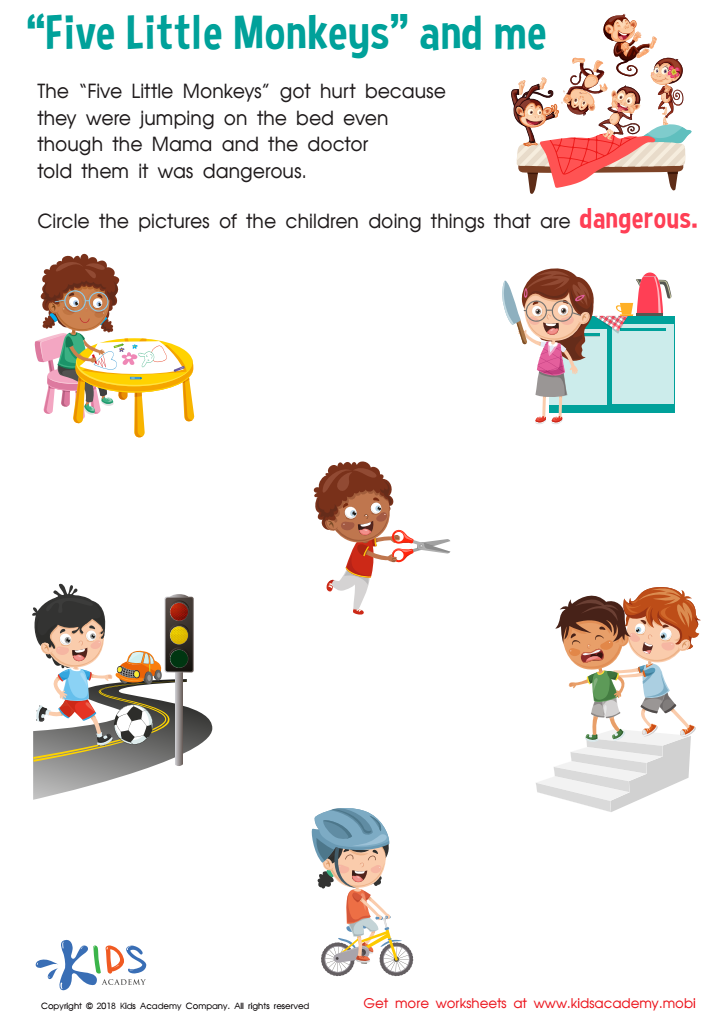

Five Little Monkeys and Me Worksheet
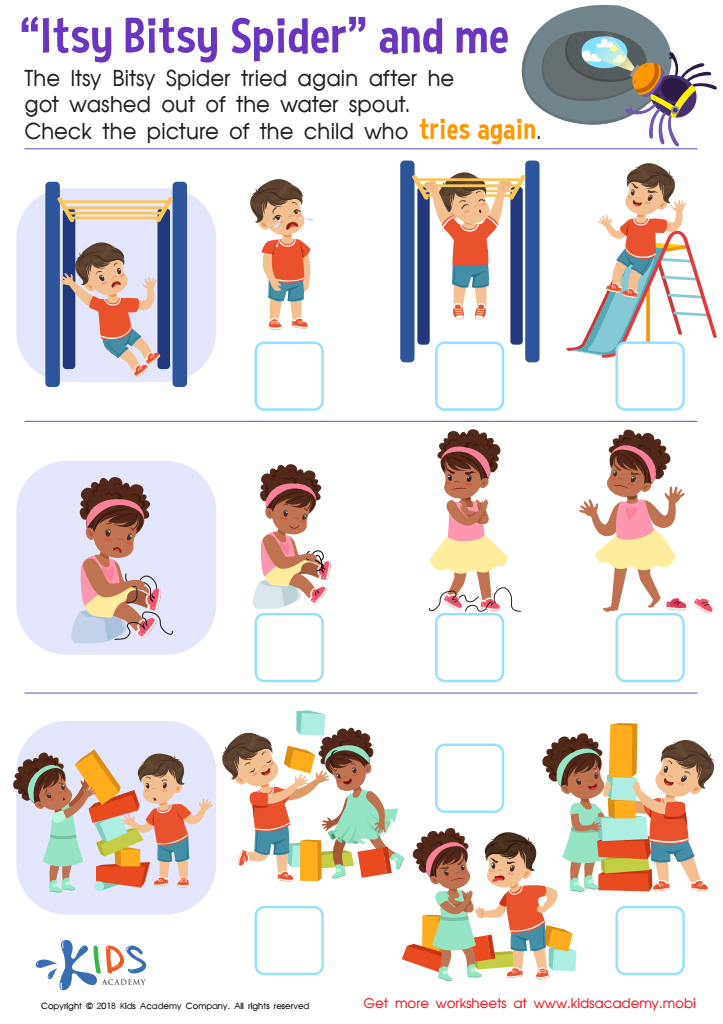

Itsy Bitsy Spider and Me Worksheet
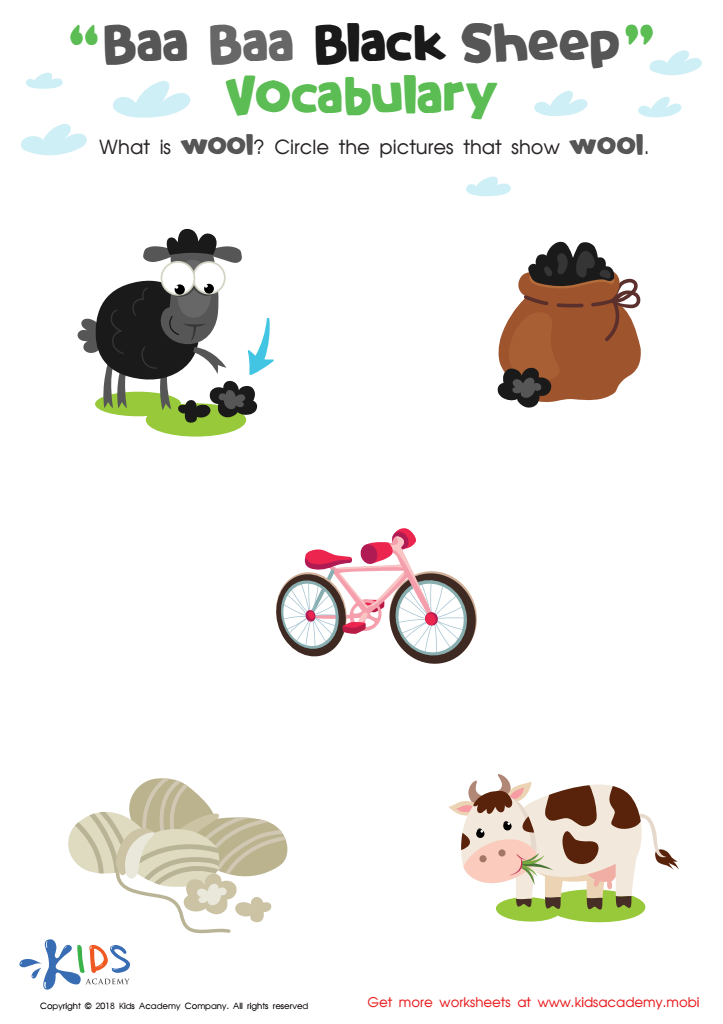

Baa Baa Black Sheep: Vocabulary Worksheet
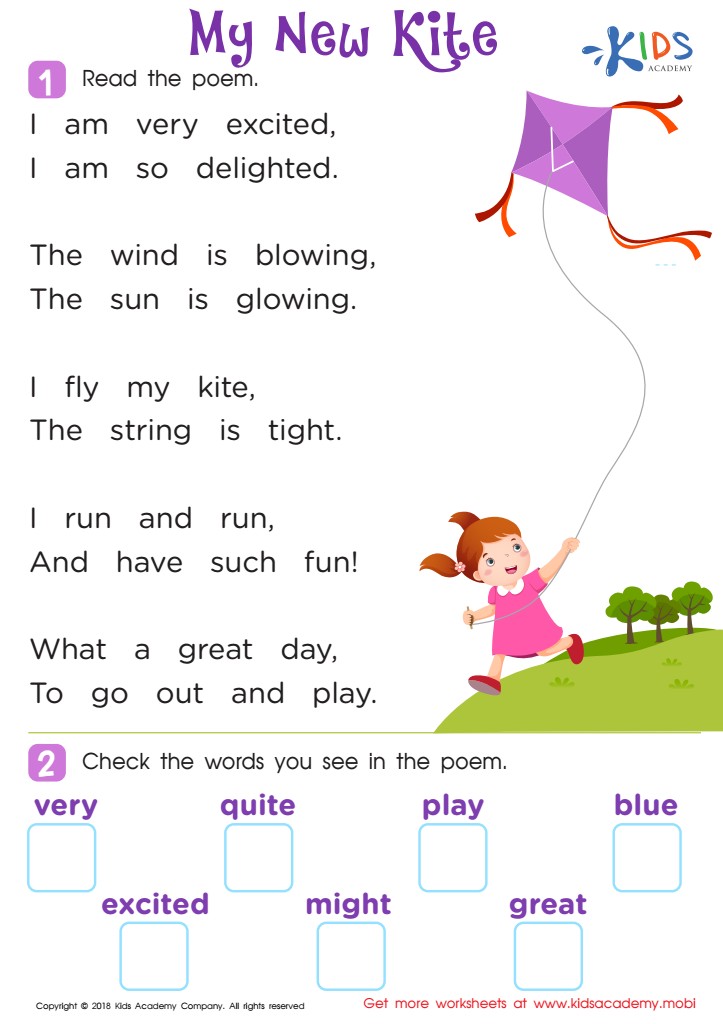

Poem: My New Kite Worksheet
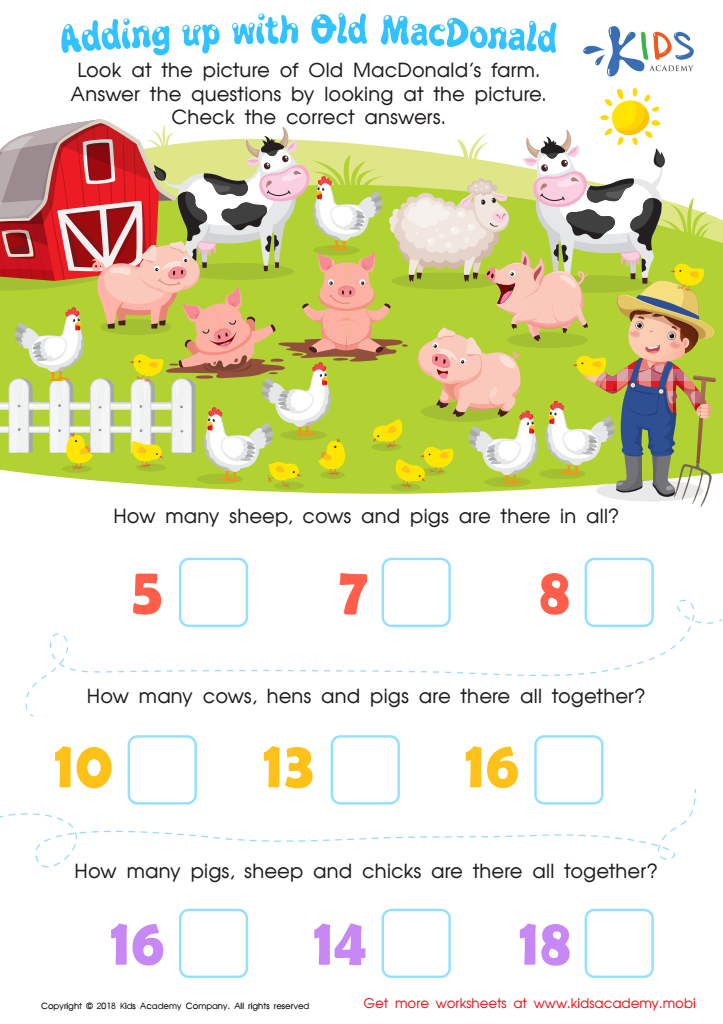

Adding Up with Old MacDonald Worksheet
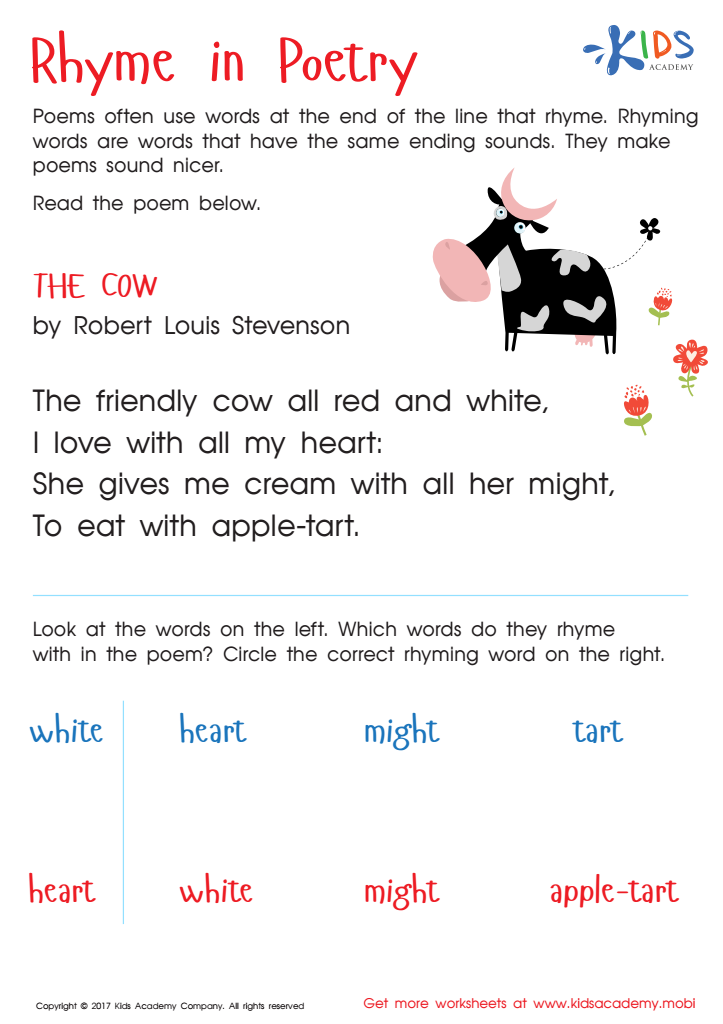

Rhyme In Poetry Worksheet
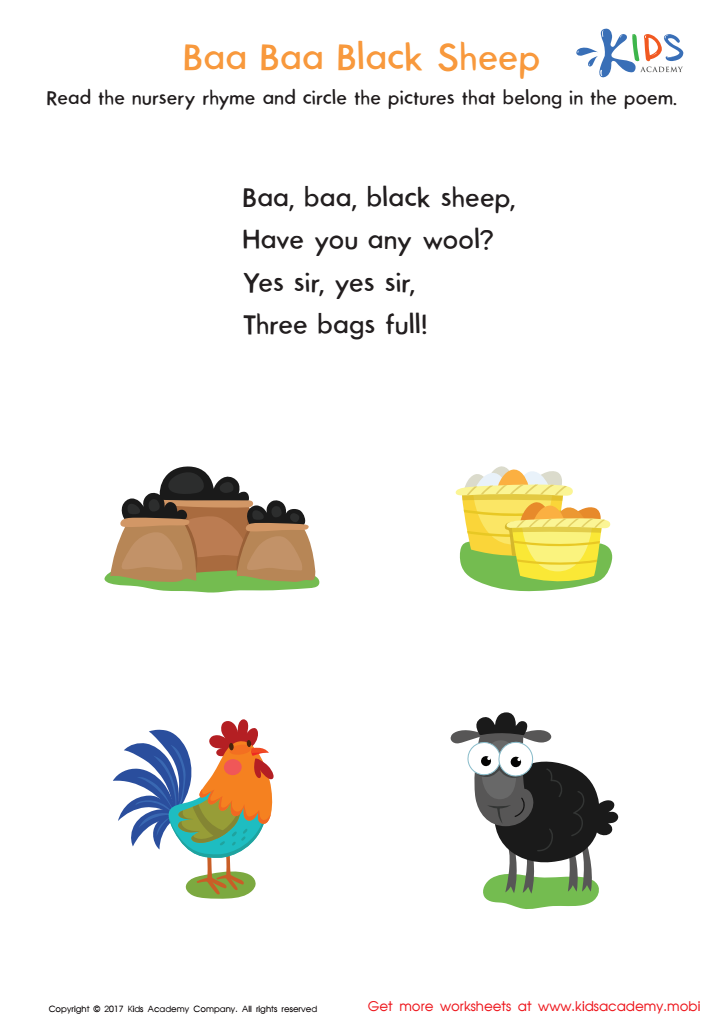

Baa Baa Black Sheep Printable
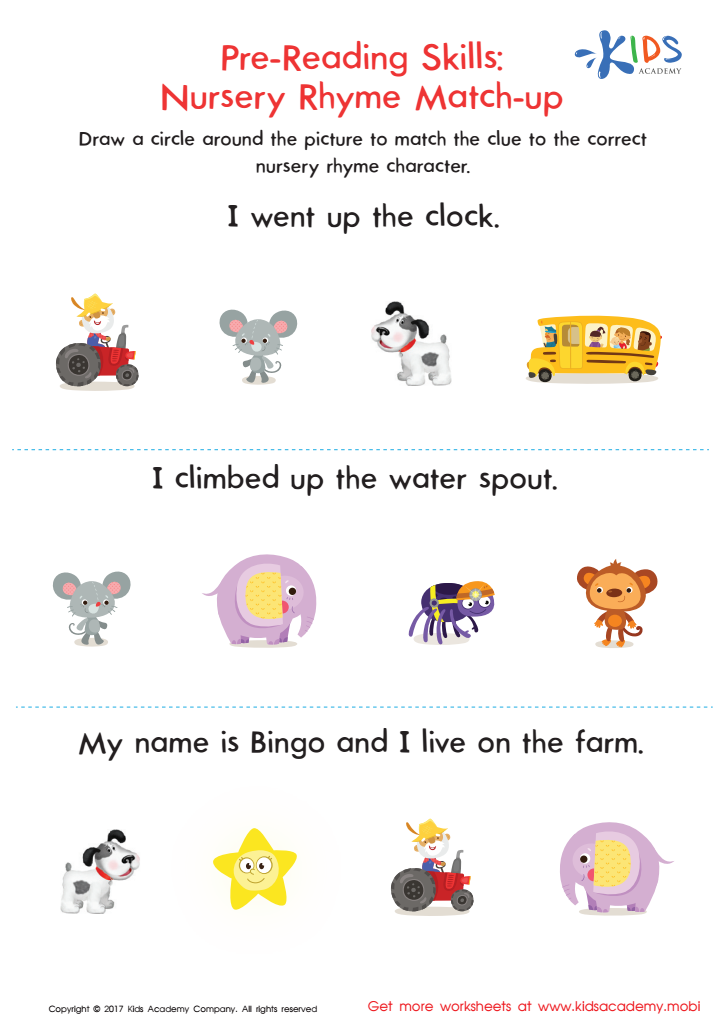

Nursery Rhyme Match–Up Worksheet
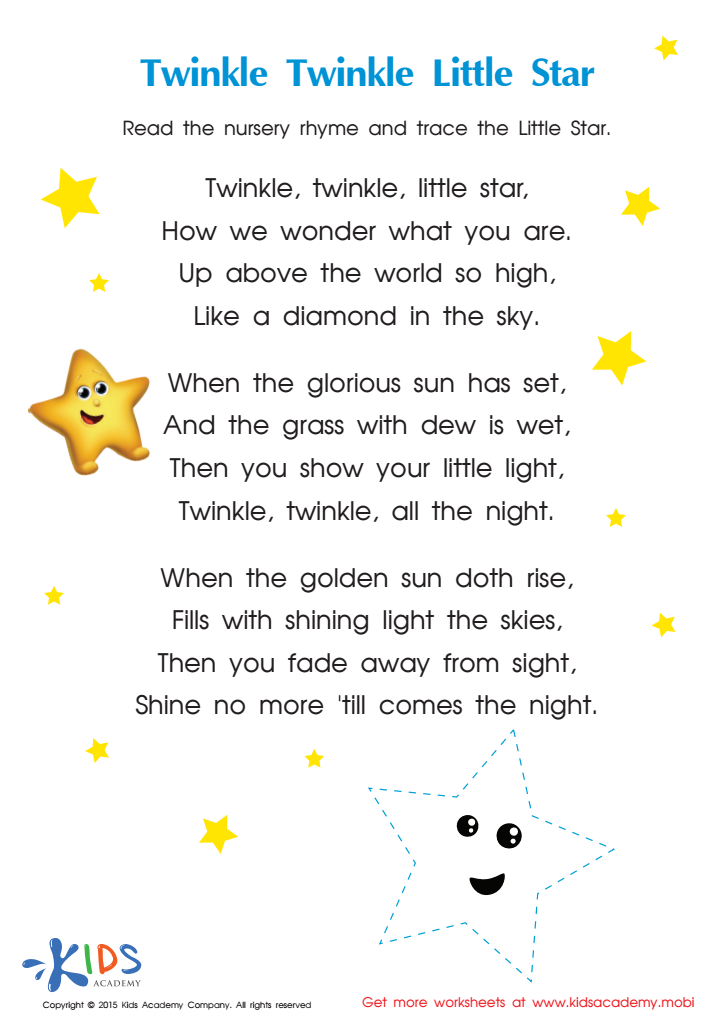

Nursery Rhymes: Twinkle Little Star Worksheet
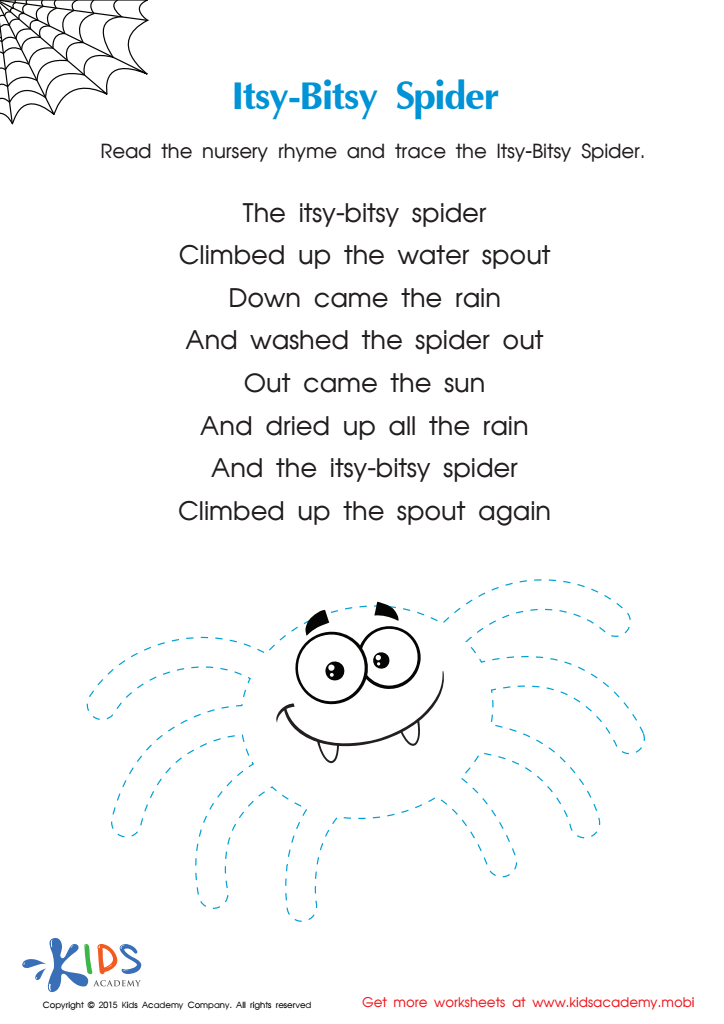

Itsy Bitsy Spider Nursery Rhyme PDF Worksheet
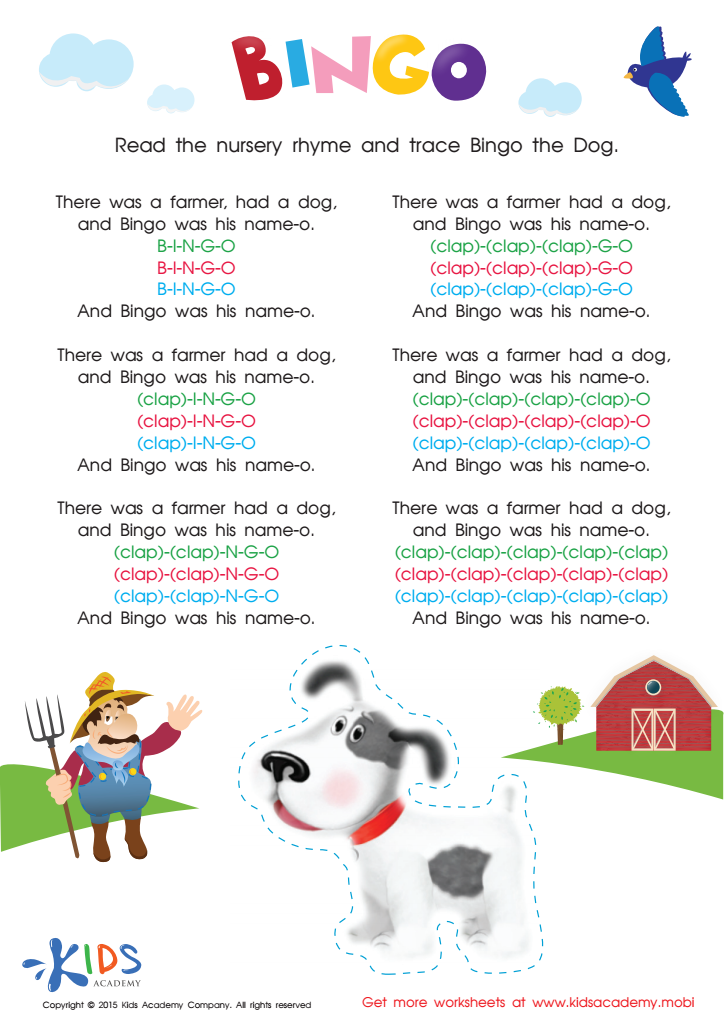

Nursery Rhymes: The Bingo Song Worksheet
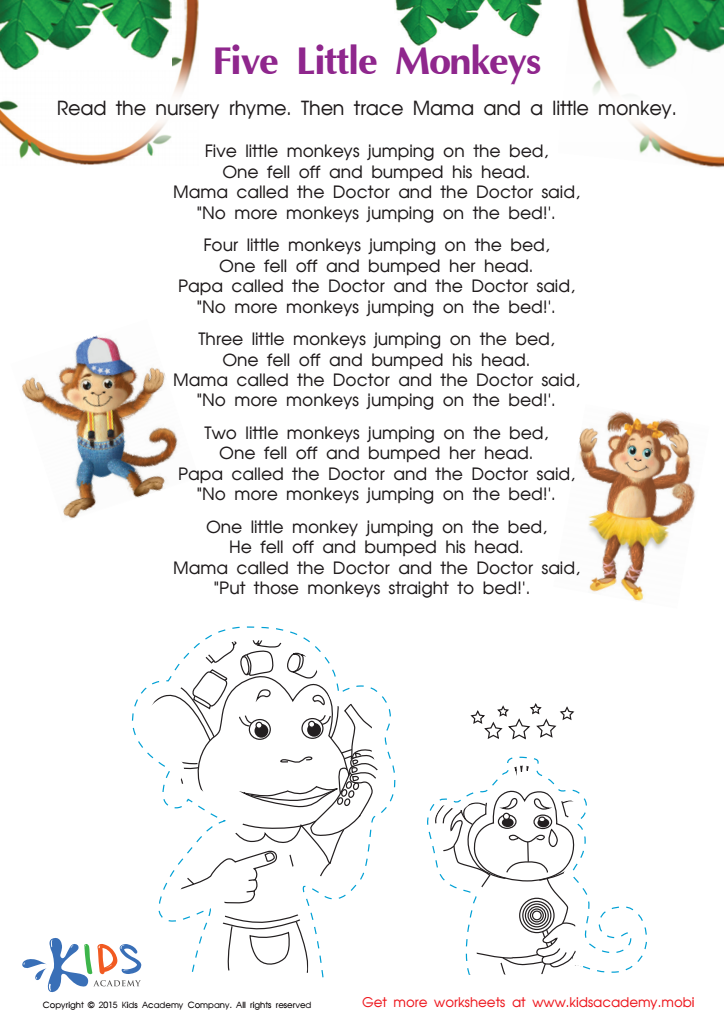

The Five Little Monkeys Nursery Rhyme Worksheet
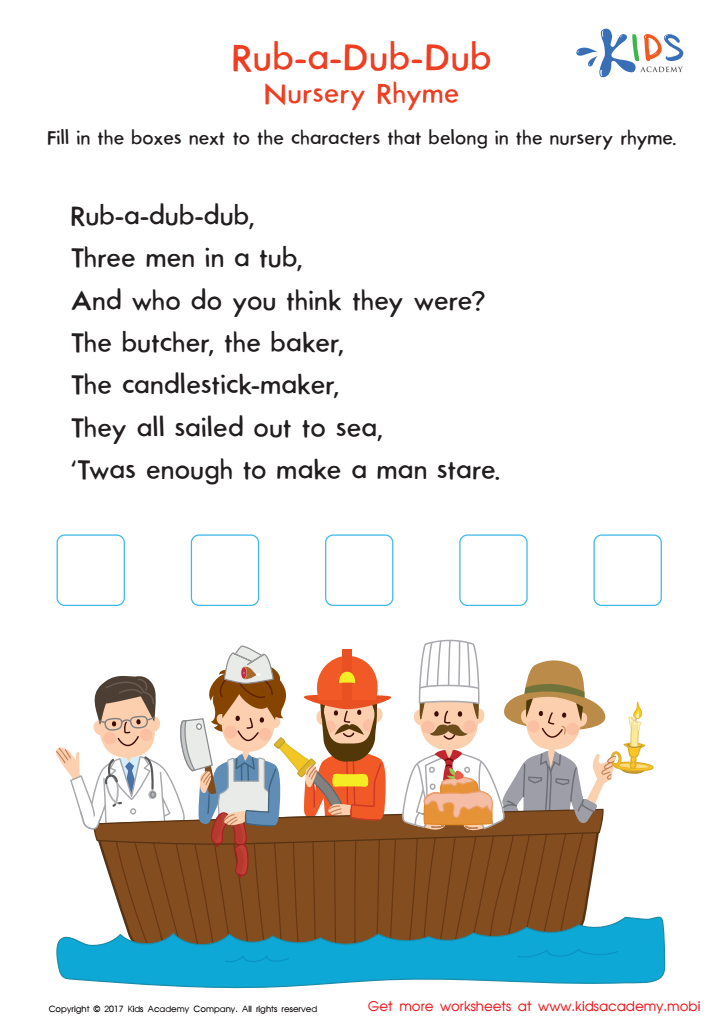

Rub a Dub Dub Printable
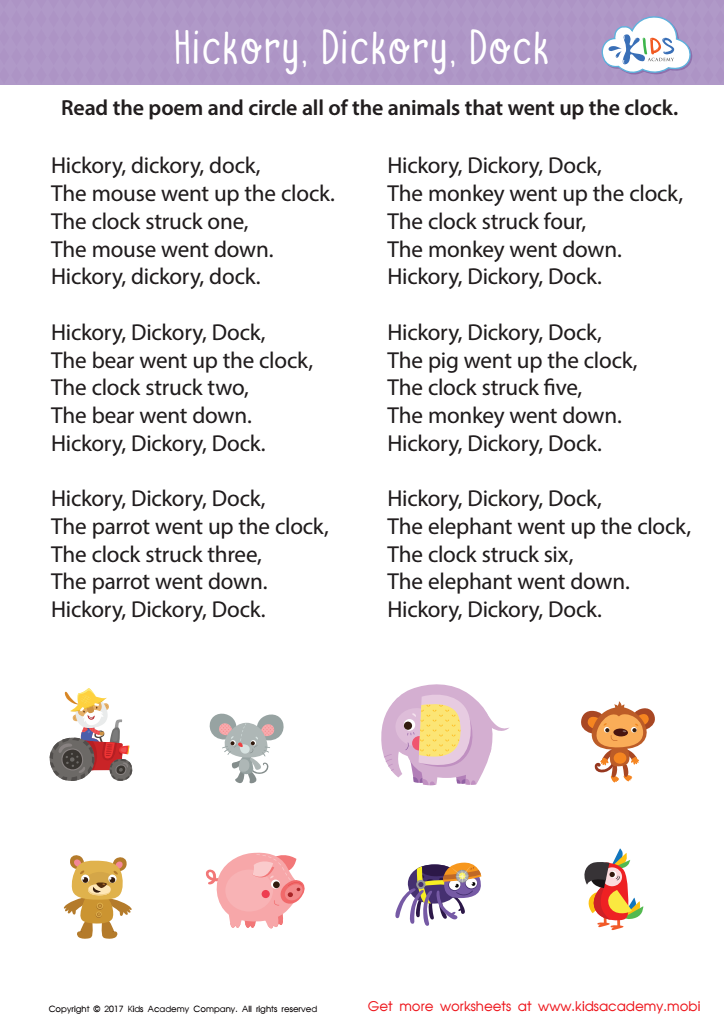

Hickory Dickory Dock Sequencing Worksheet
Songs and poems are vital activities for children ages 5-8, as they significantly contribute to cognitive, social, and emotional development. Firstly, these activities enhance language skills through rhythmic patterns, rhyme, and repetition, which make new vocabulary more memorable and engaging. When children sing and recite poems, they learn to articulate sounds properly, fostering clearer speech and comprehension.
Moreover, songs and poems are excellent tools for fostering creativity and imagination. They encourage children to exploring emotions, build narratives, and express themselves artistically, which is foundational for their creative thinking. This type of engagement can also cultivate a lifelong love for literature and music.
Socially, group singing and poetry recitation foster cooperation and teamwork, as children learn to share experiences and create connections with their peers. These activities often involve movement and playfulness, making them an enjoyable way to build social skills.
Lastly, these activities can support emotional health; songs and poems often address themes like friendship, sharing, and resilience, helping children navigate their feelings in a safe way. In essence, incorporating songs and poems into the lives of young children enriches their development and enhances their learning experiences, making it a priority for parents and teachers alike.
 Assign to My Students
Assign to My Students




